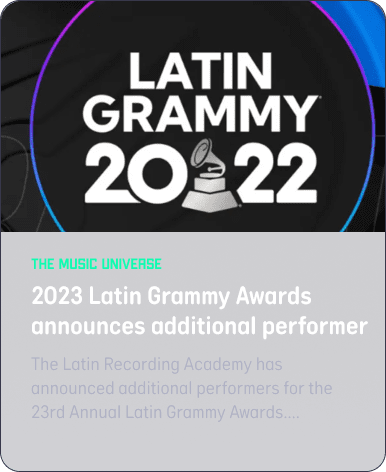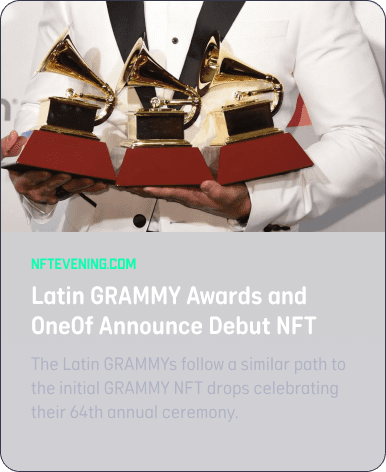Fashion’s archives are on the blockchain and being made into NFTs
Owners of archival garments and accessories are turning to blockchain technologies to make their pieces more widely accessible, and turning them into tradeable NFTs that give access to both digital and physical elements.

This article on fashion week technology is part of our Vogue Business Membership package. To enjoy unlimited access to Member-only reporting and insights, our NFT Tracker and TikTok Trend Tracker, weekly Technology and Sustainability Edits and exclusive event invitations, sign up for Membership here.
Fashion’s archives are moving to the blockchain as owners of iconic pieces embrace Web3 to both protect their collections and make them more widely accessible to a new generation of nostalgia-hungry collectors.
This month, important pieces from late Vogue Italia editor-in-chief Franca Sozzani, such as a Miu Miu Autumn/Winter 2015 snakeskin coat and a Bottega Veneta pre-fall 2016 colour-block dress, are being sold to new owners both digitally and physically. Digital fashion platform Lablaco is releasing 25 pieces from the fashion icon’s couture archive in partnership with Fondazione Sozzani, founded by Franca’s sister Carla Sozzani, and fine arts academy Nuova Accademia di Belle Arti (NABA). The physcial pieces were digitised by Lablaco, and will now be sold connected to NFTs, via Lablaco’s metaverse world Spin.
The NFTs are now for sale at Fondazione Sozzani for Milan Fashion week, where viewers can scan QR codes to see photos of Sozzani wearing the clothing. The Bottega dress shows the original iteration on the model, followed by a photo of Sozzani with Anna Wintour at a 2016 dinner celebrating Tomas Maier’s 15 years as creative director of Bottega Veneta. “The goal was to track and pay tribute to the legacy of Franca in a way that would not disappear” when transferred to a new owner, says Lablaco co-founder Lorenzo Albrighi. New owners adding their own item-associated content to the blockchain will add value to the NFT as it moves through the secondary market, adds co-founder Eliana Kuo. Through Spin, viewers and owners can also place items in front of them with AR, and view the 3D digital version.
Also this month, 1990s fashion history gets the Web3 treatment: The three lacy cloth fans that a Marie Antoinette-inspired Madonna used as articulated accessories in her 1990 MTV Video Music Awards performance of her song, Vogue, will go on display, thanks to a special decentralised autonomous organisations (DAO). Web3 decentralised museum Arkive recently acquired these now-iconic pieces from director and choreographer Vincent Paterson, who’d been storing them for 32 years. Arkive plans to display the pieces in various global locations, such as the Museum of Pop Culture in Seattle. The group also plans to record their historical provenance and authenticity in a smart contract, which will also track their location.
Looking further to the past, three famous images of Marilyn Monroe taken by Frank Worth are now available through 29 September via the sale of 149 Redemption Token NFTs, whose holders will be able to select which of the three they’d like to receive physically, thanks to a partnership between archive custodians Globe Entertainment and Media and NFT platform OneOf.
These follow a host of archival metaverse projects. In April, Paco Rabanne launched NFTs of its archival pieces in collaboration with Selfridges to finance additions to its archive. These were based on 12 “unwearable” show pieces from early collections. The year prior, Eric Pfrunder, Chanel’s former artistic director for fashion who inherited Karl Lagerfeld’s 120,000-plus archive of images, registered these on the Lukso blockchain. And last month, Nike introduced an in-store AR experience wherein consumers were invited to unlock digitised “artefacts” from Nike’s DNA: Department of Nike Archives via QR codes around the store.
Brands’ design history has become a valuable, marketable commodity, Patricia Mears, deputy director of the Museum at the Fashion Institute of Technology (FIT) in New York, told Vogue Business in April. The capitalisation on archives via Web3 tech reflects an extension of this value, in that blockchain technology provides new opportunities for collectors and companies to monetise stored history, and for fans to learn about and acquire — even partially — previously inaccessible pieces.
Brands may not be receptive just yet, as this accessibility might sit uneasily with the rarity and value of archive pieces, says Alistair O’Neill, professor of fashion history and theory at art school Central Saint Martins, but the many projects in the pipeline will help to prove out customer interest and integrity.
Diverse approaches to archival appreciation
In keeping with fashion’s preoccupation with nostalgia, the Dematerialised co-founder Karinna Grant says that iconic and recognisable products drive purchases in the metaverse just as they do outside of it.
One item can have both phygital and digital-only versions, Grant says, to cater to different access tiers and budgets. The Dematerialised, which is billed as an “NFT marketspace”, will often have both a digital-only version at an entry-level price point for fans to pledge allegiance and demonstrate connoisseurship, and a higher-priced offering that includes the physical garment. A recent drop of Rotate’s Theresa dress included 80 €80 “Rotat3 Digital” NFTs alongside one €800 “Rotat3 Phygital” dress. This same model can be applied to archival pieces, and the revenue potential could even be higher, Grant notes. Sozzani’s items, for example, are currently on sale for €800 to €7,500.
Arkive’s acquisition of Madonna’s costume accessories is meant to “functionally reverse the museum experience”, says founder Tom McLeod, both in how pieces are curated and in accessibility. In this case, the approximately 600 DAO members voted to acquire the folding fans, as they do each month. “You’re crowdsourcing intelligence and growing the consensus around a particular item,” he explains. Instead of a 12-person curatorial museum board, Arkive can defer to the hundreds of members who learned the story and voted to accept the fans.
Arkive is a DAO in that members are holders of NFTs that grant access to, and voting rights in, the DAO rather than owning items themselves. To join, members can apply on the Arkive site. By relegating ownership to the DAO, Arkive can open access to archival pieces that would otherwise be kept behind closed doors or in a single museum by “renting” them out to different museums, universities and exhibition spaces globally (prices are not yet determined for this type of arrangement). The smart contract will record every space in which the piece appears. Similar to the Sozzani exhibition, items will be displayed with a scannable QR code linking to information about its origin, history and who voted to purchase it. It also acts as a verification mechanism: each time an individual scans the code, they will take a geo-tagged picture which verifies an item’s location at a given time.
Digital fashion can also serve as a useful indicator of commercial potential, The Dematerialised’s Grant says, as brands can use digital versions of archived pieces to decide what to re-issue, and virtual versions offer a way to engage with the product without wear-and-tear.
Making the leap
Brands wanting to bring their archives to the blockchain, or turn them into NFTs, need to have a long-term plan and established narrative in place, says Grant, to avoid the project being seen as a quick cash-grab. Time spent to understand and contextualise a piece can lend legitimacy to a blockchain-based archive endeavour. “It warms my heart to think that someone would care to share these things,” choreographer Paterson says, noting how Arkive’s team came to his Hollywood home to meet him and learn about the items. “There’s another form of authenticity.”
Legal hoops can complicate matters. Registering items on the blockchain and creating an NFT from existing pieces ought to be (and often is) a safe bet when a brand already owns the items. In this case, the NFT acts as an extra signifier of provenance, Grant says, and the brand is in full control of the digitisation process. That said, given the nascency of the tech — and lack of legal precedent — legal hiccups may prevail. Grant cites a digital archive project The Dematerialised has had in the works with an unnamed brand for a year and a half that remains stuck in legal wranglings.
Grant points to brands’ efforts to obtain a secondary and tertiary revenue stream from products as a potential upside, as blockchain technology enables secondary market sales revenue when written into a product’s smart contract. The Sozzani project ensures a 10 per cent royalty fee is given in perpetuity to the original NFT owner each time it is sold on the secondary market. In a pivot from profit, however, this fee will be donated to The Franca Sozzani Fund for Preventive Genomics at Harvard Medical School to support ongoing research.
That said, fashion has to be willing — and not all houses will be. “Web3 tech offers clear economic benefits if a fashion brand is keen to monetise its archive, but we are still at a stage where the heritage of a brand resonates more in surviving objects over digital articulations of them,” Central Saint Martins’s O’Neill says.






